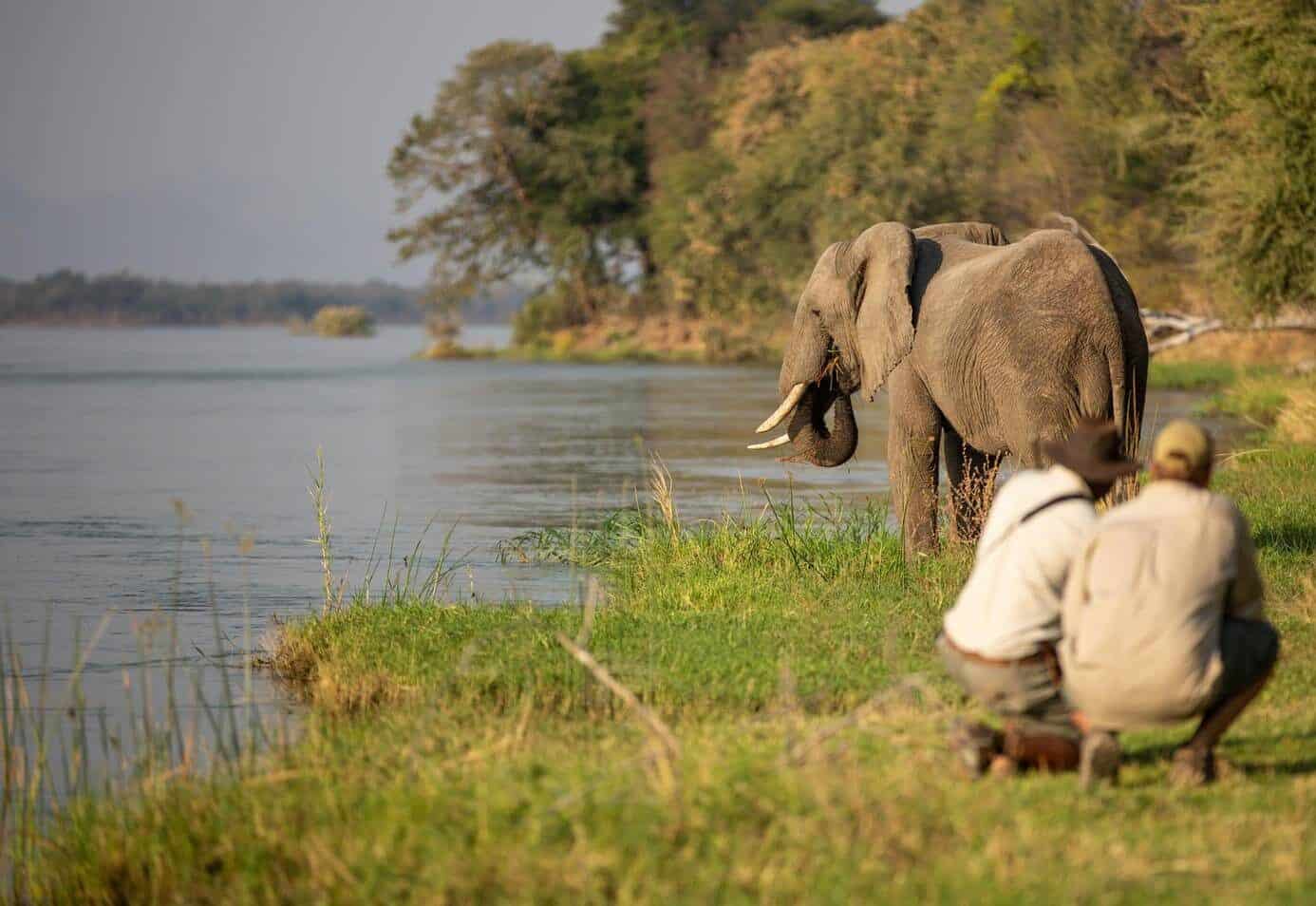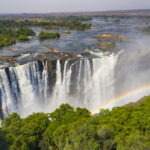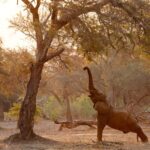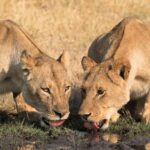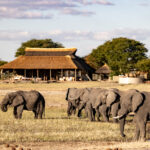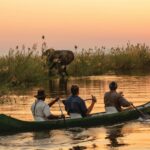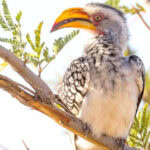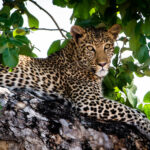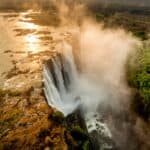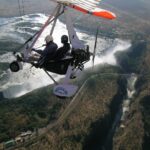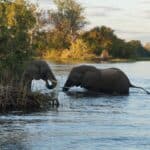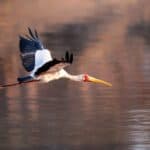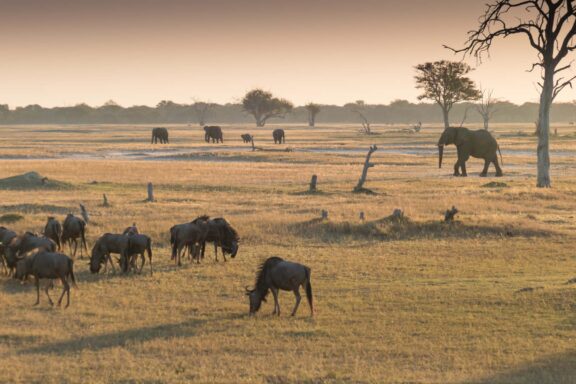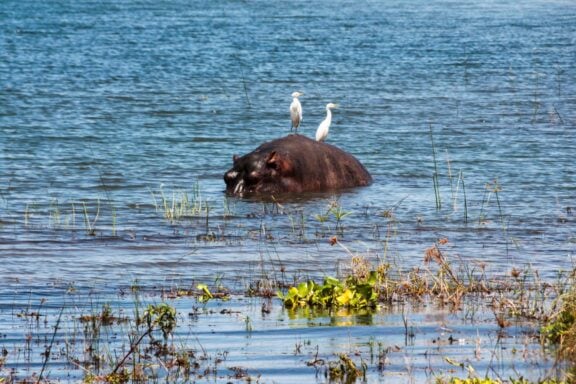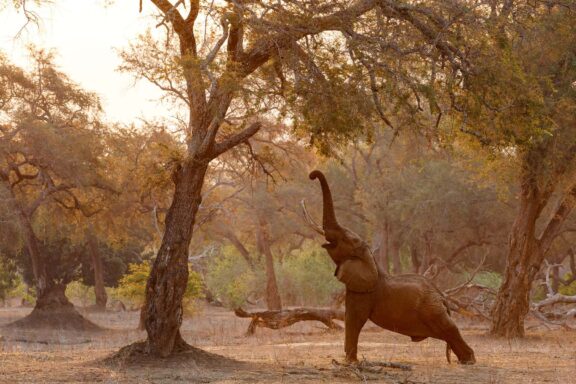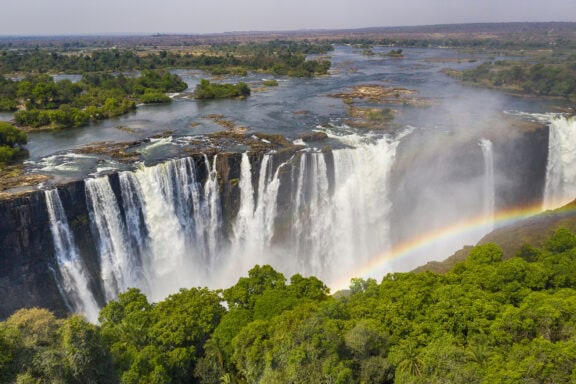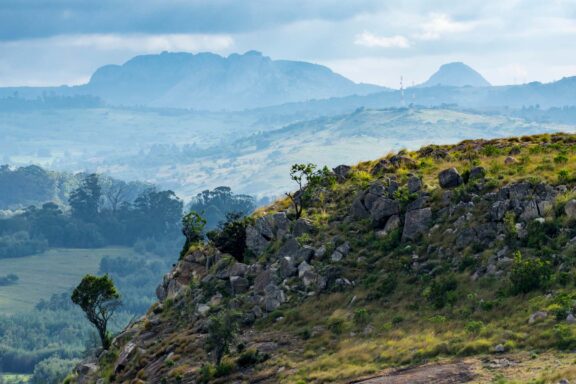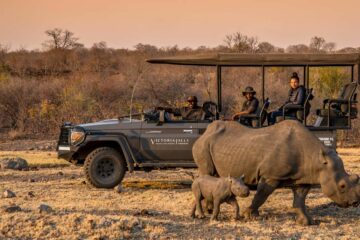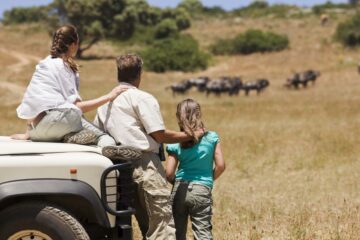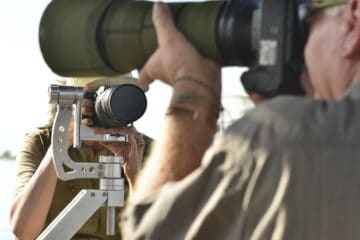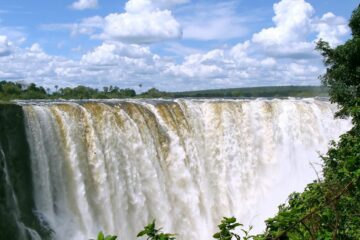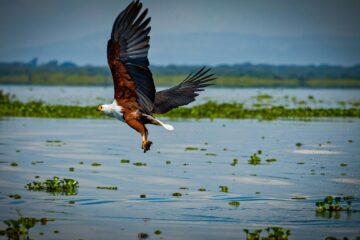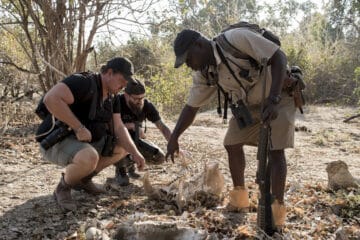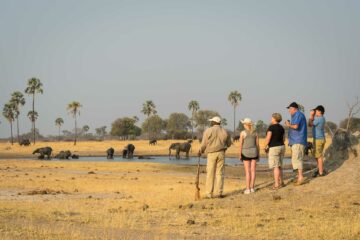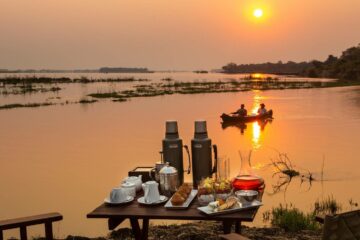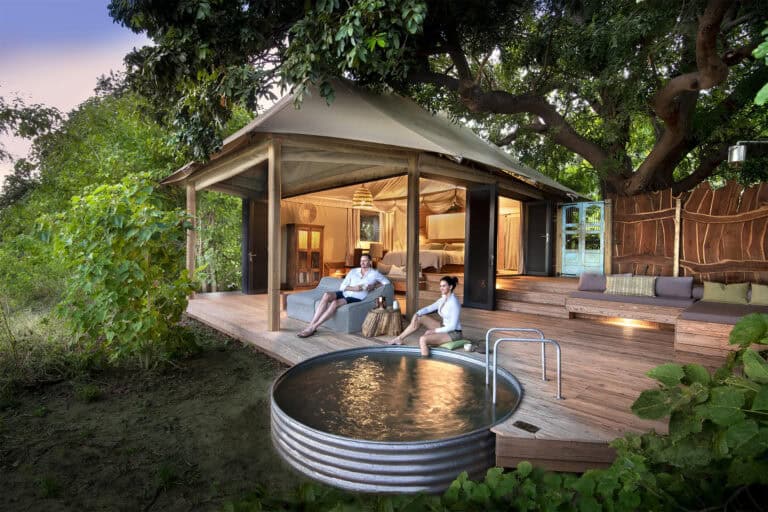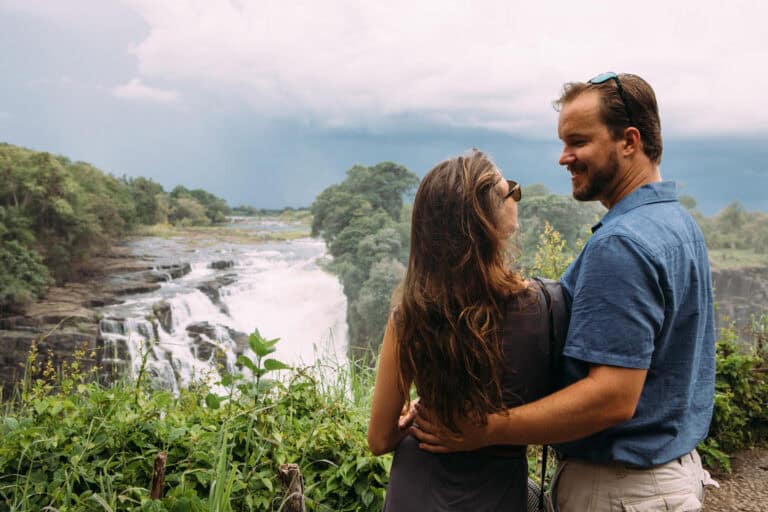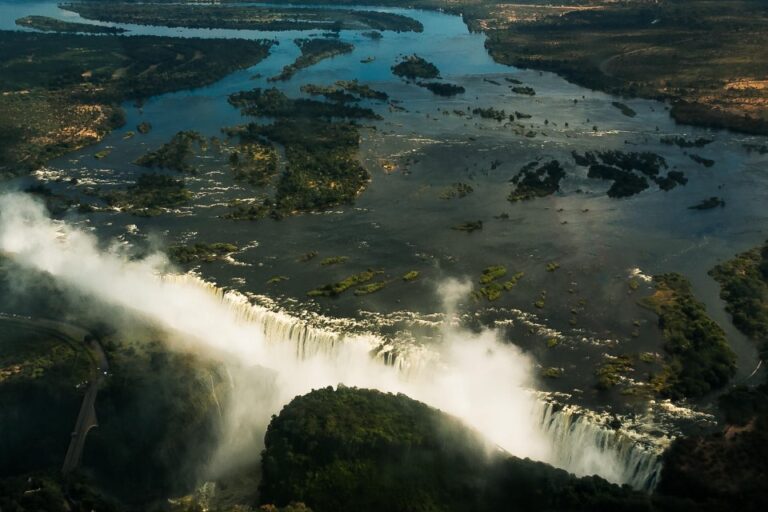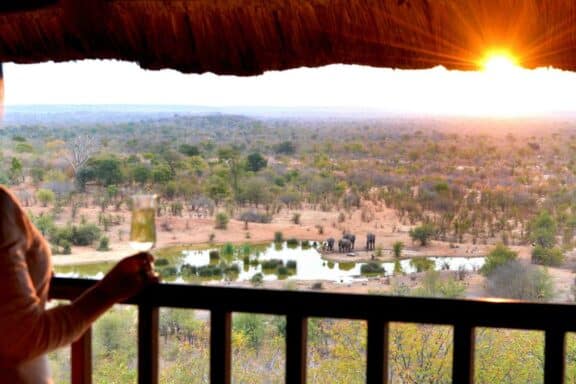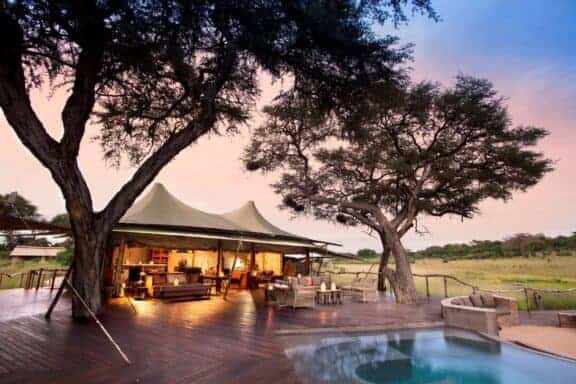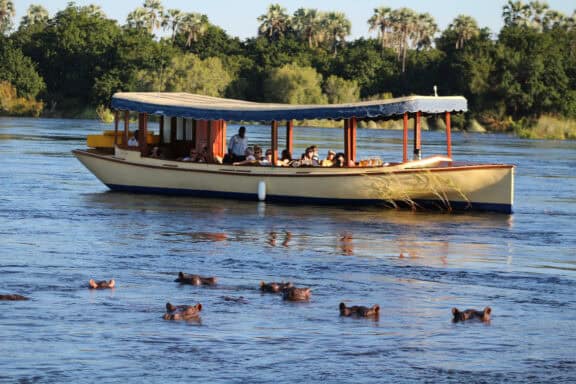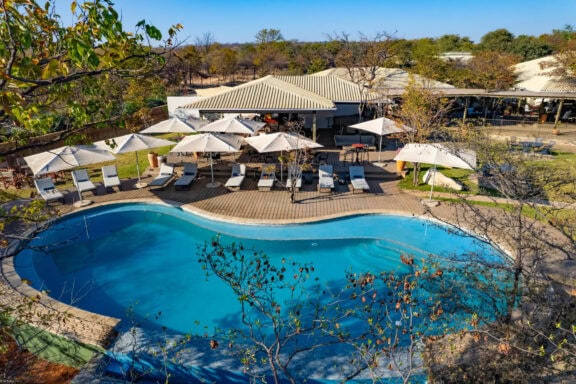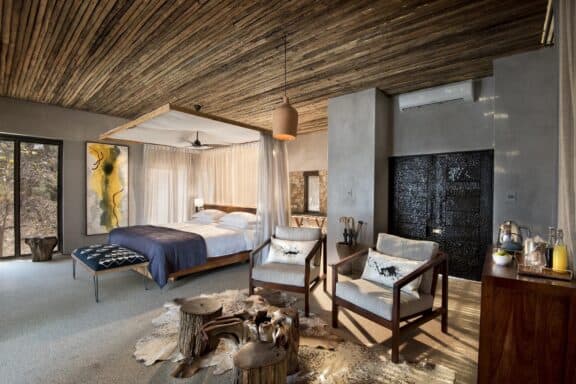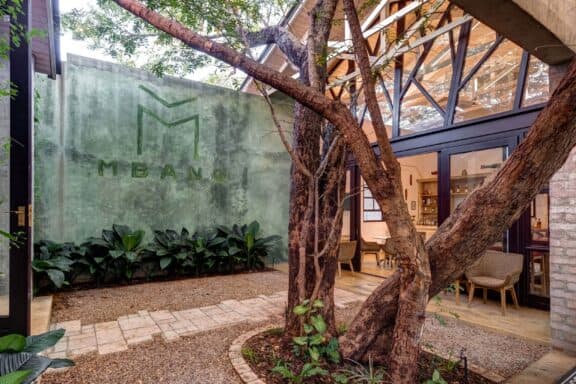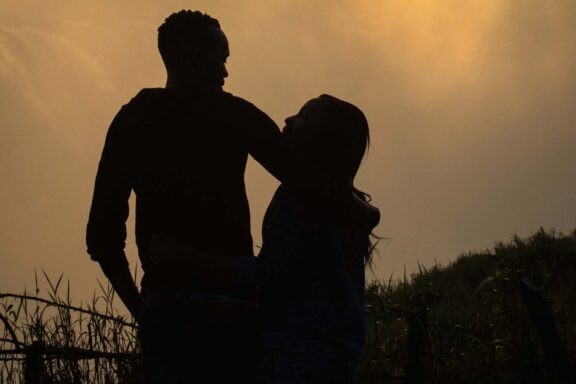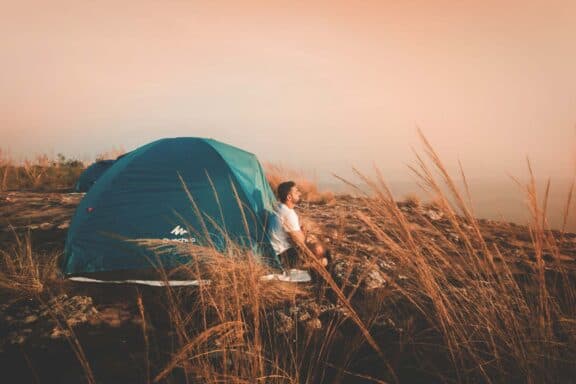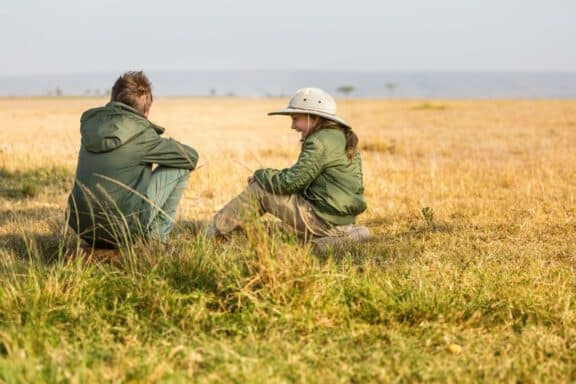A Zimbabwe safari is an invitation to step into a land where ancient history meets untamed wilderness, where every horizon holds the promise of discovery. This is southern Africa’s best-kept secret, a destination for travellers who crave intimacy with nature, precision in guiding, and moments that linger long after you return home.
Hwange National Park welcomes you with vast plains where elephants roam freely, their trumpeting calls echoing across the landscape. Lions lounge under acacia trees, leopards slip silently through the undergrowth, and the buffalo herds shape the rhythm of the wilderness. Here, Big Five encounters are living, breathing stories waiting to be experienced first-hand.
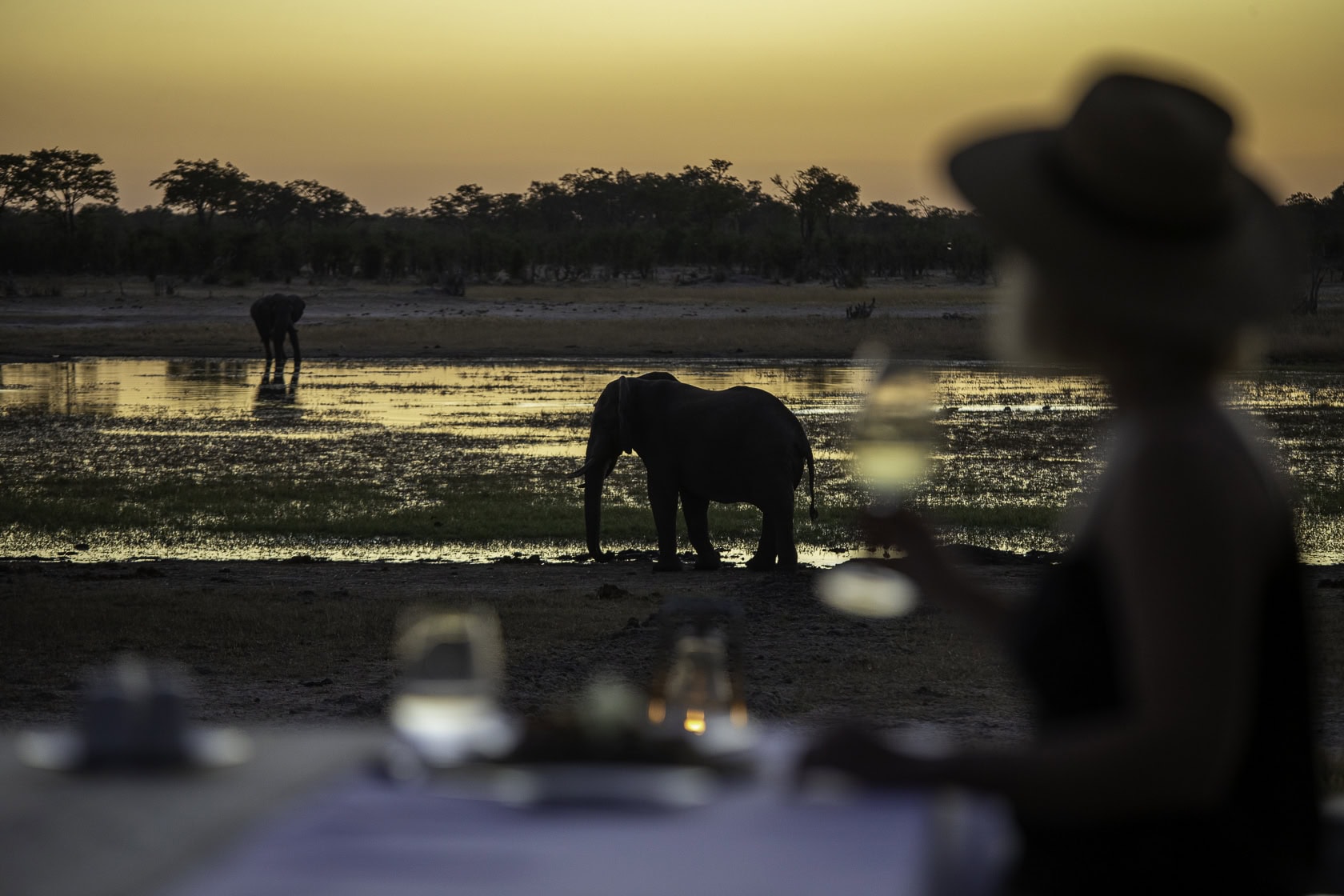
Drift along the Zambezi River as the sun dips below the horizon, painting the sky in shades of amber and rose. Hippos submerge with barely a ripple, crocodiles glide effortlessly beneath the surface, and the riverbanks come alive with the quiet stirrings of life. Canoe safaris in Zimbabwe are a rare thrill, offering a different perspective of the land.
But the magic of Zimbabwe extends beyond its wildlife. Explore the ancient ruins of Great Zimbabwe, the stone testament to an empire that thrived centuries ago, or walk among local communities where tradition and warmth remain at the heart of daily life. Every encounter adds depth to your journey, every sight a reminder that this country has stories to tell at every turn.
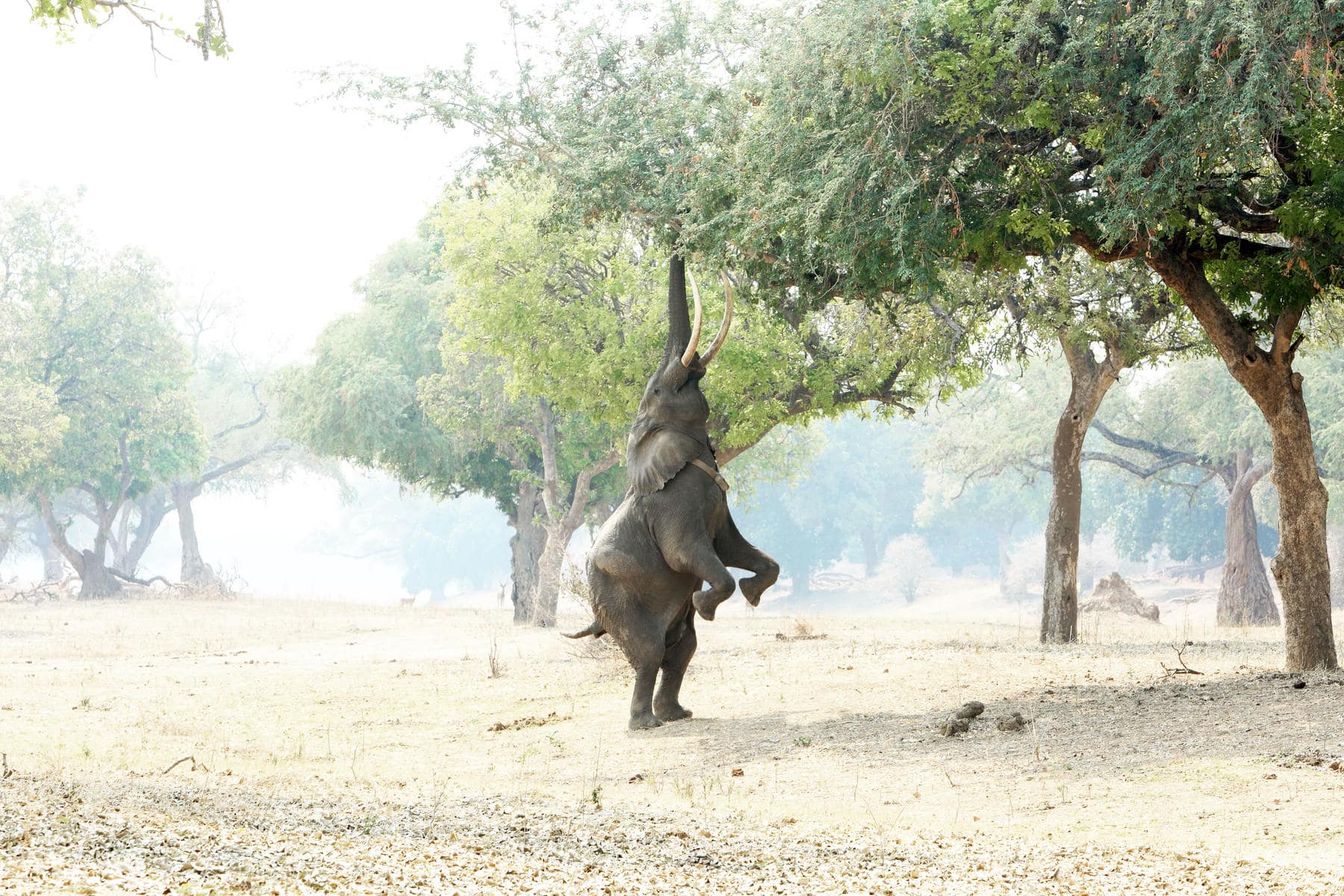
Mana Pools National Park offers experiences unlike anywhere else on the continent. Here, you can witness elephants standing on their hind legs to reach fruiting trees, watch wild dogs coordinate an intricate hunt, or fall asleep to the haunting calls of hyenas echoing across the night. This is walking safari territory at its finest. A rhythm of discovery that leaves your spirit recharged, realigned, and alive.
Ideal for Multi-Destination Itineraries
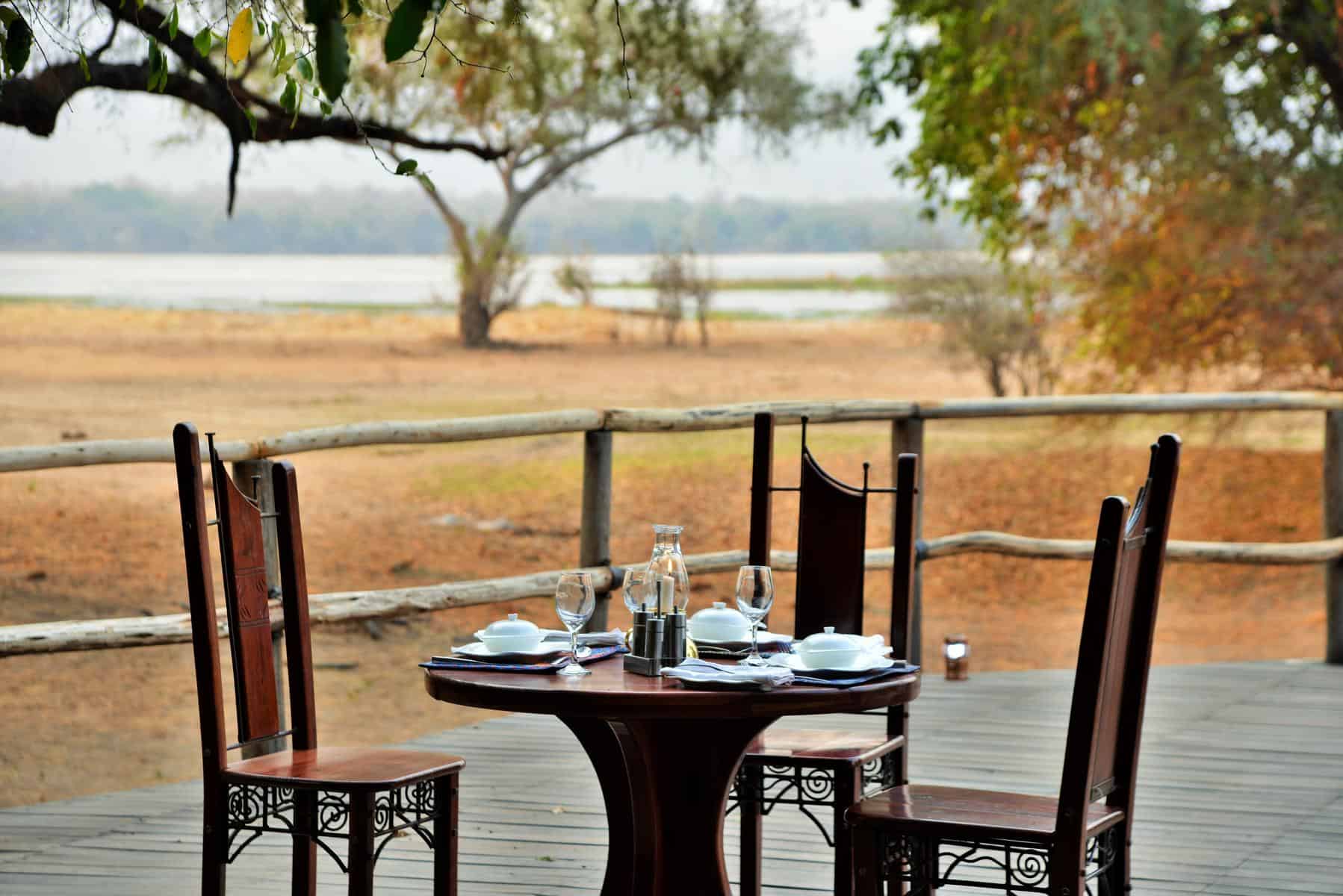
Zimbabwe’s central location in southern Africa makes it an effortless link to neighbouring countries. Whether you want to combine your Zimbabwe safari tour with Botswana’s Okavango Delta, Zambia’s Lower Zambezi, or Mozambique’s beaches, the journey is seamless. Yet, within its own borders, Zimbabwe offers enough variety to satisfy every type of traveller.
A Safari That Feels Personal

Every Zimbabwe safari tour is designed for travellers who value distinction over volume and insight over spectacle. You’ll track lions at dawn, watch elephants navigate river crossings, and walk through forests where silence speaks louder than words.
Zimbabwe vacations are about presence and being truly in the moment while being guided by experts who understand the land, the wildlife, and the magic of each encounter.
Whether you’re drifting along the Zambezi, exploring Mana Pools on foot or standing in awe at Victoria Falls, Zimbabwe leaves you transformed. This unique destination allows you to collect experiences and witness the rare, all while connecting with the wilderness in a way that feels deeply personal.
Step into Zimbabwe, and step into a safari unlike any other.









